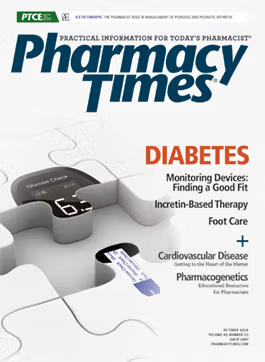Change Together for the Better
As we grow and mature, our thoughts and opinions inevitably change as we gain experience and wisdom.
As we grow and mature, our thoughts and opinions inevitably change as we gain experience and wisdom. Since my childhood and experience as a practicing pharmacist for the past 8 years, my view of the roles and responsibilities of a pharmacist has evolved.
When I was younger, pharmacists were people in white coats who made us feel better by giving us treats. I remember visiting the local pharmacy to pick up medications when my siblings or I was ill. The friendly pharmacist would put the magical bubblegum syrup in a bag, along with a lollipop, and send us on our way. The medicine would make us feel better while the candy stained our tongues. Going to the pharmacy was always a positive experience.
Now, as a pharmacist myself, I understand the multifaceted dynamics of this position. We are educators, motivators, and initiators, with access to vast resources to benefit our patients, who view us as an added layer of safety when they are prescribed medications. Outside of our primary role of dispensing prescriptions, we are integral members of a team that works collaboratively to improve patient health, from analyzing the cost—benefit of prescribed medications to improving patient adherence.
The work of a pharmacist continues to be serving the public—young and old, male and female, poor and wealthy. Because of the potential for complications from elevated glycated hemoglobin levels, hypertension, dyslipidemia, and other medical conditions, patients with diabetes are a special group that often requires a more holistic approach to treatment and thus additional time and attention from health care providers.
One year ago, I contacted a patient to have a sit-down consultation to discuss his medication profile as part of a medication therapy management program my pharmacy offers. This 45-year-old, overweight, Hispanic male patient had been struggling for years with elevated blood sugar levels and had grown increasingly frustrated with his lack of improvement. When he came to our appointment, he opened his medication-filled lunch bag and recited to me what each of his 9 medications were, what they were used for, and when he took them. I was impressed by his adherence and his desire to improve his health. At first glance, things were going according to plan. He had a primary care physician who was overseeing his medication therapy, and he was following doctor’s orders.
Within 30 minutes, I found many opportunities. First, I noticed a lack of cohesiveness in the patient—prescriber relationship. The physician, although changing the medication dosage to address the patient’s lab results, was not taking the time to address the patient’s concerns, such as the need for a new glucose monitor and accessibility by phone. Second, the patient’s lack of education about his medications may have been impacting his sugar levels. The patient had been taking his insulin in the morning at breakfast, so he was faced with elevated blood sugar levels of 250 to 300+ mmol/L upon waking. With a simple change of taking his insulin at bedtime, the patient may have more normal blood sugar levels in the morning. Third, there seemed to be a lack of support for the patient’s total well-being. The physician had not talked to the patient about nutrition or exercise to help him lose weight, which could have a tremendous impact on his diabetes.
With my knowledge and passion for nutrition, I recommended to the patient some helpful foods that aligned with his goal to lose weight. We discussed supplements such as cinnamon to help control sugar surges when eating. One by one, we addressed his concerns and found simple solutions to help increase his trust in his health care team and, most important, improve his health.
Now, 1 year later, the patient has a new physician with whom he is very happy, and they work together closely to fine tune the patient’s medication therapies. He is walking 3 times a week, with a weight-loss goal of 22 lb as motivation. He lost 4 lb just last month. Until a recent surgery, his blood glucose levels had been under control, and we already have a plan in place to get him back on track. He checks his glucose level twice a day with his 1-year-old glucose monitor and continues to follow his physician’s orders. With my phone calls, he has also agreed to follow pharmacist’s orders. The patient now has a team of professionals he can count on for support and accountability. He is headed in the right direction not only to change the numbers on the scale and the glucose monitor but to ultimately change his health for the better.
Like any kid growing up, I wanted to change the world. Back then, it involved wearing a red cape and using my superpowers to save us all from disaster. Now, as a grownup, I have traded in my red cape for a white coat, and although I may not be saving billions of people from imminent doom, I know that what I do as a pharmacist can change the lives of my patients, helping them save money and live better. That’s a pretty cool superpower.
For more insights from Walmart pharmacists, click here.
Linda Truong, PharmD, is the managing pharmacist at Walmart #972 in Lake Worth, Texas. Outside of work, she provides pharmacy services and medication to underserved communities during mission trips to Central and South America.

